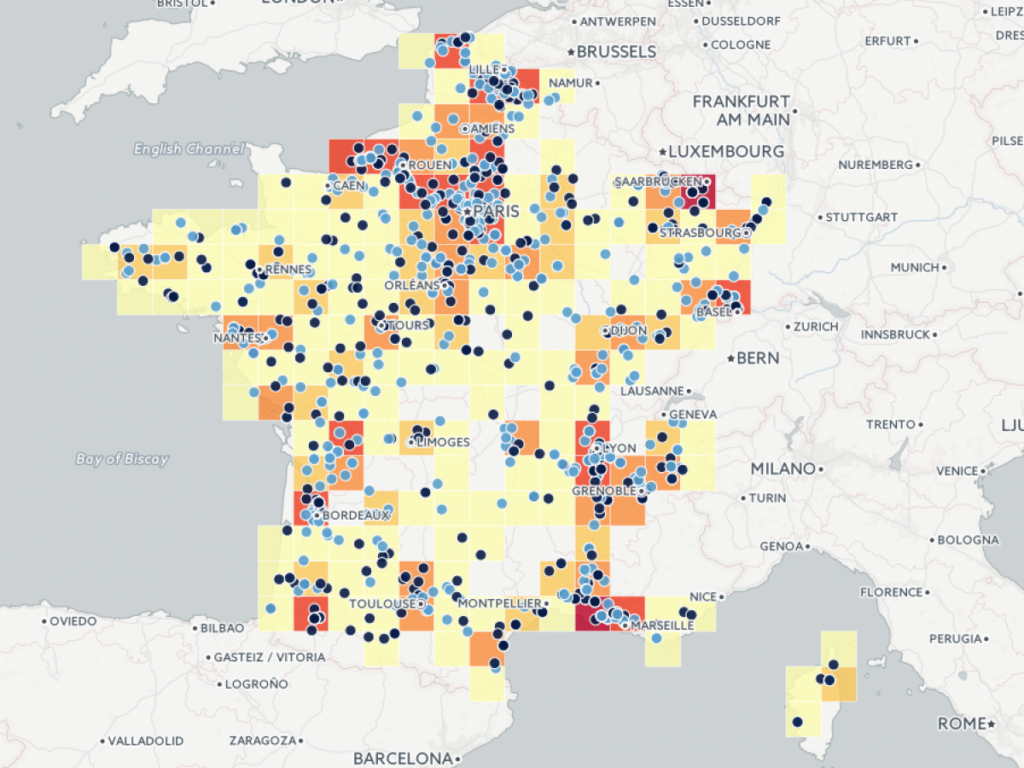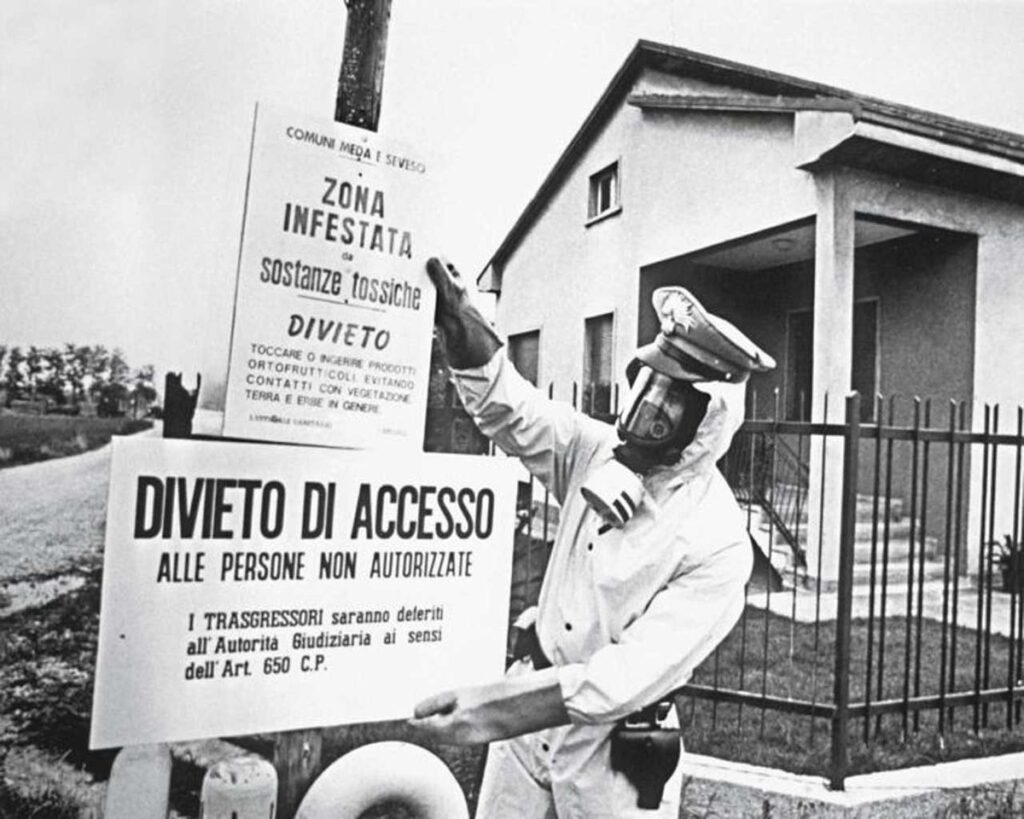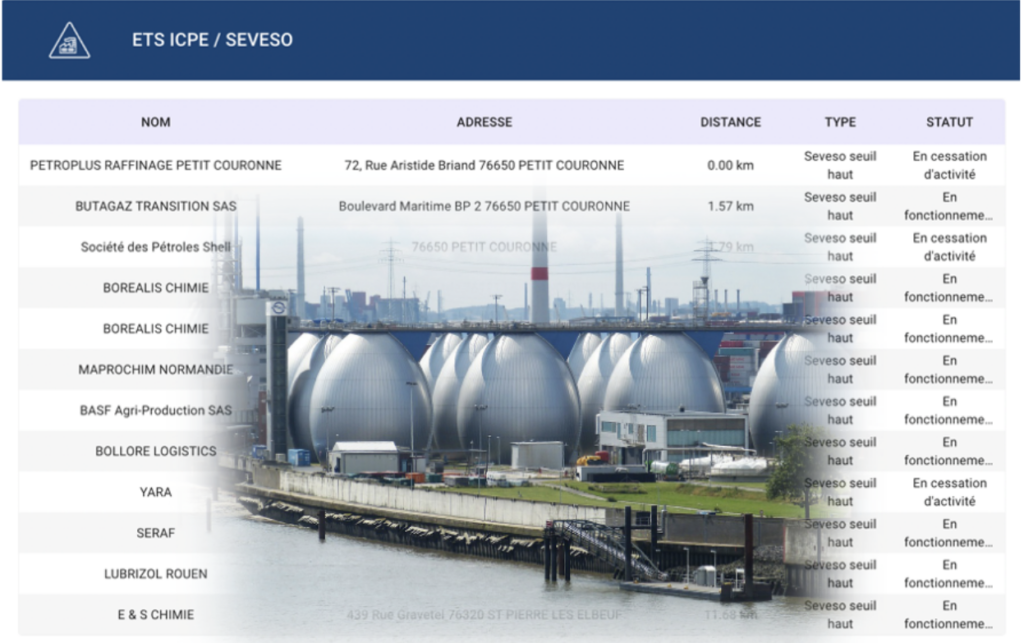340,000 people living within a 20km range of SEVESO sites in France

The Seveso Directive stands as a cornerstone of industrial safety across the European Union. Originating from the tragic Seveso disaster in Italy, this series of directives mandates member states to identify and manage industrial sites that pose significant risks of major accidents. With 1,300 Seveso sites in France alone, and a population of 340,000 within a 20km radius of these sites, the importance of this directive cannot be overstated.
The Seveso Directive is named after the Seveso disaster that occurred on July 10, 1976, in Seveso, Italy. This catastrophic event involved the accidental release of a toxic chemical, dioxin, from a chemical plant. The disaster resulted in widespread environmental contamination and severe health issues for the local population, prompting the need for stringent industrial safety regulations across Europe. The Seveso disaster highlighted the dire need for a coordinated approach to managing industrial risks. The immediate aftermath saw thousands of people evacuated, livestock slaughtered, and significant long-term health effects, including chloracne and other serious conditions. This tragic event underscored the vulnerabilities in industrial safety protocols and galvanized European authorities into action.

In response to the Seveso disaster, the European Economic Community (EEC) adopted the first Seveso Directive in 1982. This directive laid the foundation for a comprehensive industrial safety framework, focusing on the prevention and control of major chemical accident hazards. Over the years, the directive has undergone several revisions, with Seveso II in 1996 and Seveso III in 2012, each iteration enhancing the scope and stringency of the regulations.
Insurance in the Face of Seveso Sites Risks
But do you know exactly where they are located? And are you fully aware of the associated risks? We invite you to explore the challenges that Seveso sites present to professional and business insurers. Additionally, learn how these risks can be better managed today, particularly with the help of technology and AI, which allow for precise geolocation of these hazards. Insurance in the face of risks related to Seveso sites
A concrete example: the incident of November 20, 2021
Saturday, November 20, 2021. A fire breaks out at a high-threshold Seveso site. The nearest homes are just 450 meters from the property boundaries. The fire originated from an issue with the lithium-ion battery of a pallet truck and its charger. Over 250 tons of various goods went up in flames during the incident, including 3.7 tons of hazardous materials (notably flammable liquids). All the quay equipment (carts, pallet trucks, chargers, etc.) was also destroyed. The economic, human, and environmental consequences were severe.
In total, the damage was estimated at 15 million euros.
The cost is high.
But the consequences are equally significant.
The risks associated with Seveso sites range from accidental pollution to major disasters that can cause significant material, human, and environmental damage.
Knowing the exact locations of these sites is crucial for better anticipating these domino-effect situations. Obvious, yet not as simple as it seems! In the available downloadable dataset, the Seveso risk mentioned in the above example is actually located 1.5km away from its real position. And it’s far from being the only one in this situation.
Poorly located risks
Public datasets, although valuable resources, only provide an approximate idea of geographic locations. This is a real problem for certain industries.
In the insurance sector, for example, precise location of sites is absolutely essential for accurately assessing the risks associated with a specific location. With this information, insurers can appropriately adjust insurance premiums, ensuring that the price accurately reflects potential risks.
It also allows them to develop a proactive and preventive approach. By providing precise information about risks and demonstrating their ability to cover them adequately, insurers build trust with their clients.
The stakes are therefore very high regarding the geolocation of Seveso sites. This is a challenge that Data4Risk teams have taken on.
Data4Risk technology to help insurers identify Seveso risks
Gain peace of mind with our specialized service offering a comprehensive list of SEVESO and other hazardous facilities (i.e., ETS ICPE) in close proximity to any specific address in France. At Data4Risk, we understand the critical importance of environmental and industrial safety in your community.
Our expertly curated database provides detailed information on nearby classified facilities, empowering you with the knowledge needed to assess potential risks and make informed decisions.

Whether you’re a concerned homeowner, business owner, or local authority, our solutions arm you with the insights necessary to prioritize safety and implement appropriate measures. Trust Data4Risk to deliver accurate and reliable information, ensuring the well-being of your surroundings.
